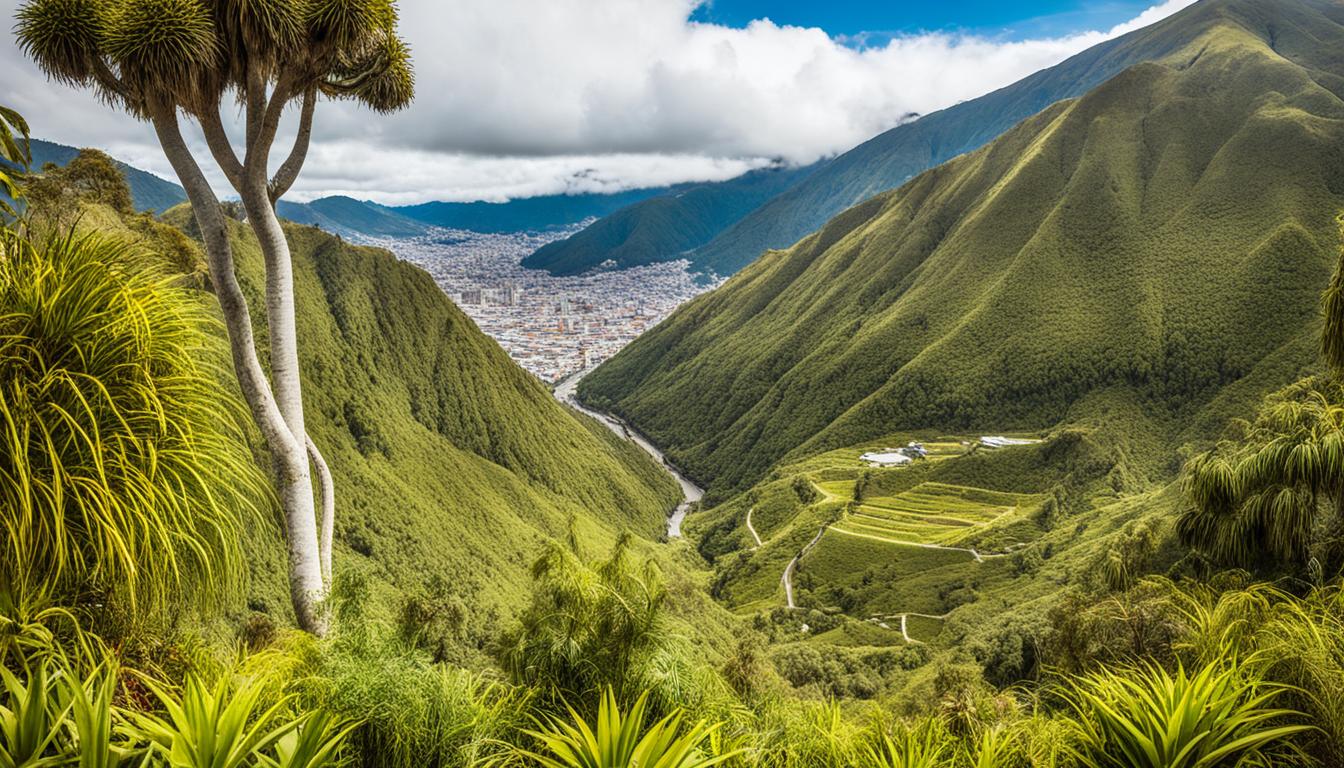Maldives Biodiversity: Animal and Plant Species and What Is Under Threat
Welcome to our in-depth exploration of the rich biodiversity found in the enchanting Maldives. Located in the Indian Ocean, this tropical paradise is home to a diverse array of marine life, wildlife, and stunning coral reefs. However, the delicate ecosystem and its inhabitants are facing numerous threats that require our urgent attention and conservation efforts.
From endangered species to the sustainability of tourism, this article dives into the challenges faced by the Maldivian environment and the initiatives undertaken to protect it. Join us as we uncover the fascinating world of the Maldives’ biodiversity and explore how we can contribute to its preservation.
Key Takeaways:
- The Maldives boasts a diverse range of animal and plant species, including rare and endangered ones.
- The delicate coral reefs in the Maldives are under threat due to environmental factors.
- Conservation efforts and sustainable tourism practices are crucial for safeguarding the Maldives’ biodiversity.
- The Maldivian government has implemented the National Biodiversity Strategy and Action Plan (NBSAP) to protect and preserve the environment.
- Protected areas, such as marine and terrestrial reserves, play a vital role in safeguarding vulnerable species and habitats.
Implementation of the NBSAP
The National Biodiversity Strategy and Action Plan (NBSAP) in the Maldives is a comprehensive plan formulated with the aim of achieving ecological sustainability and promoting individual responsibility for biodiversity conservation. The NBSAP is based on guiding principles that emphasize the equitable sharing of benefits and accountability to the public.
Implementation of the NBSAP involves wide consultation and stakeholder participation, ensuring that biodiversity conservation issues are integrated into all areas of national development, planning, policy, and administration. The Ministry of Environment and Energy takes the lead in implementing the NBSAP, with other key institutions incorporating relevant activities into their work programs.
To ensure the effectiveness of the NBSAP, the Maldives has prioritized a review of the plan, recognizing the need for continuous improvement. In line with this, a technical committee has been established to provide guidance and ensure that the NBSAP remains relevant and effective in addressing the biodiversity conservation challenges faced by the Maldives.
The implementation of the NBSAP plays a crucial role in aligning national development with biodiversity conservation goals. By integrating biodiversity considerations into various aspects of policy and administration, the Maldives strives to achieve sustainable development while protecting its unique natural heritage.
Actions taken to achieve the 2020 Aichi Biodiversity Targets
The Maldives has made significant progress in its efforts to achieve the 2020 Aichi Biodiversity Targets. With the establishment of 44 protected areas, both marine and terrestrial environments are being safeguarded, contributing to the conservation of diverse ecosystems.
These protected areas encompass a range of sensitive habitats, including fish breeding areas, bird sanctuaries, micro atolls, islands, mangroves, and marine areas. By designating these areas as protected, the Maldives is taking concrete steps to preserve their biodiversity and ensure the sustainability of their resources.
Turtle conservation is a priority in the Maldives, with a ten-year moratorium on turtle harvesting and the prohibition of sea turtle egg collection in selected regions. This measure plays a crucial role in the protection of turtle breeding grounds and the preservation of these magnificent creatures. Furthermore, the Hanifaru area has been declared a marine protected area, contributing to the conservation of its unique marine ecosystem.

The Maldives, through the Atoll Environment Conservation (AEC) Project, has initiated and supported various biodiversity-related projects. This commitment has resulted in the declaration of Baa Atoll as a UNESCO Biosphere Reserve, further solidifying the country’s dedication to preserving its natural treasures.
Support Mechanisms for National Implementation
The Maldives has taken significant steps towards biodiversity conservation by implementing policies and action plans for the management and integration of protected areas. Although specific legislation for protected areas is still being formulated, the country has already granted protected status to various areas, including dive sites, mangroves, and ecologically significant islands.
However, one of the challenges faced in the Maldives is the low allocation of government budgets and overseas donor support towards environmental protection. To address this issue, mechanisms for financing, capacity-building, coordination, and mainstreaming are being established to support national implementation efforts.
Table: Funding Allocation for Environmental Protection in the Maldives:
| Year | Government Budget Allocation (USD) | Overseas Donor Support (USD) |
|---|---|---|
| 2018 | 8,000,000 | 3,000,000 |
| 2019 | 7,500,000 | 2,500,000 |
| 2020 | 7,200,000 | 2,800,000 |
These mechanisms aim to ensure that there is sufficient funding available for biodiversity conservation initiatives. They also focus on building the capacity of individuals and organizations involved in conservation efforts, enhancing coordination among stakeholders, and mainstreaming biodiversity considerations into various sectors such as tourism, infrastructure development, and agriculture.
The establishment of these support mechanisms will not only strengthen the implementation of conservation measures but also contribute to the long-term sustainability of biodiversity in the Maldives.

Mechanisms for Monitoring and Reviewing Implementation
The Maldives is committed to implementing the National Biodiversity Strategy and Action Plan (NBSAP) and ensuring the success of conservation efforts. To effectively monitor and review the progress of implementation, the Maldives is in the process of developing robust mechanisms.
With a focus on accountability and transparency, these mechanisms aim to establish clear indicators that can accurately measure the impact of conservation initiatives. By tracking specific indicators, such as the preservation of endangered species, the health of marine habitats, and the reduction of pollution, the Maldives can gauge the effectiveness of its biodiversity conservation efforts.
Community participation is a key element in monitoring and review mechanisms. The Maldives recognizes that involving local communities in conservation initiatives is crucial for long-term success. By engaging communities in monitoring activities and empowering them to contribute to decision-making processes, the Maldives promotes a sense of ownership and responsibility for biodiversity conservation.
“Community participation is crucial for effective monitoring and review mechanisms. By involving local communities, we ensure that our conservation efforts are not only driven by government policies, but also reflect the needs and aspirations of the people who live and rely on these biodiverse areas.” – Dr. Ali Rilwan, Director of Biodiversity, Ministry of Environment and Energy
Currently, there is no established coordination system for monitoring and review. However, the Maldives recognizes the importance of regular evaluation and is working towards establishing a comprehensive framework. This framework will facilitate consistent monitoring and review activities, ensuring that progress is tracked over time and any necessary adjustments can be made to conservation strategies.

By implementing effective monitoring and review mechanisms, the Maldives aims to uphold the principles of the NBSAP and ensure the conservation and sustainable use of its natural resources. These mechanisms will provide valuable insights, enabling stakeholders to make informed decisions and take timely actions to protect biodiversity for future generations.
The International Union for Conservation of Nature’s Red List of Threatened Species
The IUCN Red List of Threatened Species is a comprehensive information source on the global extinction risk of animal, fungus, and plant species. It serves as a critical indicator of biodiversity health and provides guidance for conservation and funding priorities. The Red List provides information on geographic range, population size, habitat and ecology, threats, and conservation actions.
By assessing species and categorizing them into different extinction risk levels, the Red List helps inform necessary conservation decisions. It considers factors such as geographic range and population size, providing valuable insights into the health of biodiversity.
Conservation priorities can be determined using the Red List, as it highlights species that are most at risk and require urgent attention. This information aids in allocating resources and implementing effective conservation measures.
“The IUCN Red List plays a crucial role in identifying species that are on the brink of extinction and guiding conservation efforts towards their protection. By understanding the threats faced by each species and their conservation needs, we can work towards preserving biodiversity for future generations.” – Dr. Jane Goodall
Conservation organizations, governments, and researchers rely on the Red List to make informed decisions regarding species’ protection and management. It serves as a valuable tool for identifying species that are critically endangered, endangered, or vulnerable and prioritizing conservation efforts accordingly.
Let’s take a closer look at some of the key information provided by the Red List:
Geographic Range
The Red List includes data on the geographic range of species, indicating their distribution across different regions. This information helps identify species that are restricted to specific habitats or locations, making them more vulnerable to threats and in need of targeted conservation efforts.
Population Size
Population size estimates are vital for understanding the stability and viability of species. The Red List provides information on population size trends, highlighting species with small, declining, or fluctuating populations. Species with small populations are at higher risk of extinction.
Habitat and Ecology
The Red List provides insights into the specific habitats and ecological needs of species. Understanding these requirements is essential for implementing effective conservation measures. The information enables conservationists to identify critical habitats and develop strategies to protect and restore them.
Threats
Threat assessment is a crucial component of the Red List. It identifies and evaluates the primary threats faced by each species, such as habitat loss, climate change, pollution, invasive species, and human activities. This information is fundamental for designing targeted conservation strategies.
Conservation Actions
The Red List highlights ongoing and proposed conservation actions for each species. It provides information on current efforts to protect and restore populations and their habitats. This knowledge allows stakeholders to collaborate and coordinate conservation initiatives effectively.
By utilizing the information provided by the IUCN Red List of Threatened Species, organizations and governments can make informed decisions to safeguard biodiversity health and prioritize conservation efforts.

Next, we will explore the development of a National Red List of Threatened Species in the Maldives and its role in informing species protection and conservation management.
National Red List of Threatened Species
The Maldives is committed to the conservation of its unique biodiversity and is currently developing a National Red List of Threatened Species in accordance with the guidelines set by the International Union for Conservation of Nature (IUCN). This comprehensive list categorizes different species based on their level of extinction risk, providing a valuable tool for decision-making regarding species protection and management at the national level.
The National Red List plays a crucial role in prioritizing conservation actions and research plans, ensuring the effective protection of vulnerable species in the Maldives. By identifying species at risk and understanding their specific conservation needs, policymakers and conservationists can make informed decisions to safeguard the country’s exceptional natural heritage.
This initiative follows the IUCN guidelines, which are globally recognized as the gold standard in assessing extinction risk. These guidelines consider a range of factors, including population size, geographic range, habitat quality, and the severity of threats faced by the species. Through a rigorous and standardized evaluation process, the National Red List provides a comprehensive overview of the conservation status of various flora and fauna in the Maldives.
By employing the National Red List as a decision-making tool, the Maldives can effectively allocate resources, implement targeted conservation measures, and collaborate with local communities and stakeholders to protect and preserve the fragile ecosystems that support these threatened species.

Key Findings from the National Red List
| Extinction Risk Category | Number of Species |
|---|---|
| Critically Endangered | 15 |
| Endangered | 27 |
| Vulnerable | 43 |
| Near Threatened | 32 |
| Least Concern | 115 |
Marine Reptiles Assessment and Threat Levels
The Maldives has conducted comprehensive assessments for marine reptiles, particularly sea turtles, as part of the National Red List. These assessments play a crucial role in identifying research priorities and conservation actions for these magnificent creatures.
The assessment process encompasses various factors, including evaluating population data, nesting activity, genetic affiliation, entanglement in marine debris, and historical nesting numbers. By analyzing these parameters, researchers gain valuable insights into the current status and potential threats faced by sea turtles in the Maldives.
Based on the assessment results, sea turtles in the Maldives are categorized into different threat levels, highlighting the urgency and level of protection needed for each species. The magnificent hawksbill turtles (Eretmochelys imbricata) are classified as critically endangered, underscoring the dire situation faced by this unique marine reptile. Similarly, green turtles (Chelonia mydas) are classified as endangered, emphasizing the need for targeted conservation efforts to ensure their survival.

The assessment outcomes serve as a critical foundation for research priorities in marine reptile conservation. By understanding the specific challenges faced by sea turtles in the Maldives, scientists and conservationists can develop effective strategies to mitigate these threats and safeguard their habitats.
The research priorities identified through these assessments pave the way for comprehensive studies on various aspects of sea turtle ecology, behavior, nesting, migration, and habitat requirements. These priorities guide researchers, policymakers, and conservation organizations in allocating resources efficiently and implementing targeted conservation measures to preserve these fascinating marine reptiles for generations to come.
Corals, Mangroves, and Additional Links
The National Red List assessment in the Maldives also includes corals and mangroves. These distinctive groups characteristic to the Maldives are being evaluated for their extinction risk. The assessment will help inform conservation measures and management plans for these important ecosystems.

| Ecosystem | Extinction Risk Level |
|---|---|
| Corals | Under assessment |
| Mangroves | Under assessment |
Through the evaluation of the extinction risk of corals and mangroves, the Maldives can develop targeted conservation measures to preserve these vital ecosystems. Protection of corals contributes to the health and diversity of marine life, while mangroves provide crucial habitats and protect coastal areas from erosion.
For further resources on understanding and protecting biodiversity in the Maldives, refer to the following links:
- IUCN Red List
- USAID Maldives
- IUCN Maldives
Conclusion
The Maldives is committed to protecting its diverse biodiversity and the unique ecosystems that thrive within its borders. With the implementation of the National Biodiversity Strategy and Action Plan (NBSAP) and the establishment of protected areas, the country is actively working towards achieving the Aichi Biodiversity Targets and preserving its natural heritage.
Efforts are underway to enhance monitoring and review mechanisms, ensuring that conservation initiatives are effective and sustainable. The Maldives understands the importance of securing funding and resources to support these efforts and is actively seeking ways to strengthen its environmental protection programs.
Furthermore, the Maldives acknowledges the vital role of sustainable tourism in preserving its natural wonders. By promoting responsible and eco-friendly tourism practices, the country aims to strike a harmonious balance between economic growth and the conservation of its delicate ecosystems. Through collaborative conservation efforts and a commitment to environmental stewardship, the Maldives is paving the way for a sustainable and biodiverse future.
FAQ
What is the National Biodiversity Strategy and Action Plan (NBSAP)?
The NBSAP is a plan implemented by the Maldives to promote ecological sustainability and individual responsibility for biodiversity conservation.
Who is responsible for implementing the NBSAP?
The Ministry of Environment and Energy is responsible for implementing the NBSAP, with various lead institutions taking responsibility for activities within their mandate.
What progress has the Maldives made in achieving the 2020 Aichi Biodiversity Targets?
The Maldives has established protected areas covering both marine and terrestrial areas, such as fish breeding areas, bird sanctuaries, micro atolls, islands, mangroves, and marine areas.
Are there regulations in place to protect endangered species in the Maldives?
Yes, the Maldives has a ten-year moratorium on the harvesting of sea turtle eggs, and a ban on shark fishing has been in effect. The Hanifaru area has also been declared a marine protected area.
How are protected areas managed in the Maldives?
The Maldives has granted protected status to various areas, including dive sites, mangroves, and ecologically significant islands. The country is developing policies and action plans for the management and integration of protected areas.
Are there mechanisms for monitoring and reviewing the implementation of the NBSAP?
The Maldives is developing mechanisms for monitoring and reviewing the implementation of the NBSAP, with a focus on establishing clear indicators and promoting community participation.
What is the IUCN Red List of Threatened Species?
The IUCN Red List is a comprehensive information source on the global extinction risk of animal, fungus, and plant species, providing guidance for conservation and funding priorities.
Is there a National Red List of Threatened Species in the Maldives?
Yes, the Maldives is developing a National Red List of Threatened Species based on IUCN guidelines. It categorizes species into different levels of extinction risk, helping prioritize conservation actions.
What is the current threat level for sea turtles in the Maldives?
Sea turtles in the Maldives are categorized into different threat levels, with hawksbill turtles classified as critically endangered and green turtles classified as endangered.
Is there an assessment for corals and mangroves in the Maldives?
Yes, the Maldives is conducting an assessment for corals and mangroves to evaluate their extinction risk and inform conservation measures and management plans.
How is the Maldives working towards biodiversity conservation and environmental protection?
The Maldives is implementing the NBSAP, establishing protected areas, developing monitoring mechanisms, and prioritizing sustainable tourism practices to protect its rich biodiversity and unique ecosystems.







